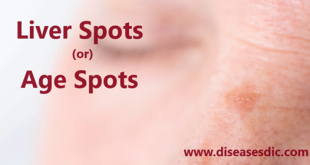What Is Lymphogranuloma Venereum (LGV)?
Lymphogranuloma venereum (LGV) is a sexually transmitted disease (STD) caused by three strains of the bacterium chlamydia trachomatis. Some types of this bacteria cause the genital infection chlamydia. Other types of this bacteria cause LGV. Chlamydia and LGV are quite different infections. LGV causes ulcers or sores of the genital area and then invades the lymph glands in the pelvis and groin.
The most common clinical manifestation of LGV among heterosexuals is tender inguinal and/or femoral lymphadenopathy that is typically unilateral. A self-limited genital ulcer or papule sometimes occurs at the site of inoculation. However, by the time patients seek care, the lesions have often disappeared. Rectal exposure in women or men who have sex with men (MSM) can result in proctocolitis, including mucoid and/or hemorrhagic rectal discharge, anal pain, constipation, fever, and/or tenesmus. LGV is an invasive, systemic infection, and if it is not treated early, LGV proctocolitis can lead to chronic, colorectal fistulas and strictures. Genital and colorectal LGV lesions can also develop secondary bacterial infection or can be coinfected with other sexually and non-sexually transmitted pathogens.
Pathophysiology
C trachomatis is an obligate intracellular bacterium. Of the 15 known clinical serotypes, only the L1, L2, and L3 serotypes cause LGV. These serotypes are more virulent and invasive compared to other chlamydial serotypes. Infection occurs after direct contact with the skin or mucous membranes of an infected partner. The organism does not penetrate intact skin. The organism then travels by lymphatics to regional lymph nodes, where it replicates within macrophages and causes systemic disease. While transmission is predominantly sexual, cases of transmission through laboratory accidents, fomites, and nonsexual contact have been reported.
The L2b serovar has been identified to play a more important role than previously expected. After the diagnosis of 92 cases of LGV in the Netherlands among MSM, Schachter evaluated samples obtained from rectal swabs between 1979 and 1985 from patients infected with HIV in San Francisco and between 2000 and 2005 in Amsterdam. The study revealed the same serotype circulating among patients with HIV and LGV 20-25 years ago. This indicates the L2b serovar has been present and unrecognized for many years.
LGV occurs in 3 stages. The first stage, which is often unrecognized, consists of a rapidly healing, painless genital papule or pustule. The second stage, consisting of painful inguinal lymphadenopathy, occurs 2-6 weeks after the primary lesion. The third stage, which is more common in women and MSM, may have a delayed presentation and is characterized by proctocolitis.
Stages of Lymphogranuloma Venereum
The three stages of LGV infection are summarised below.
Primary infection
In the primary infection, small painless genital papules, pustules, or shallow ulcers appear on the skin. These initial lesions are transient, meaning they heal quickly and disappear. They often go unnoticed or get mistaken for genital herpes. Infected individuals tend not to seek medical help at this stage.
Secondary infection
The onset of secondary infection occurs 2–6 weeks after the primary infection.
Painful and swollen lymph glands develop in the groin area. These occur on one side (two-thirds of cases) or both sides of the groin. Buboes (inflammatory swelling of the glands around the groin) can rupture and drain pus. The ‘groove sign’ (guttering along blood vessels) occurs in 15–20% of cases. Most male patients present with symptoms during this stage. Women may present with less specific symptoms, often pelvic and back pain.
Late-stage Lymphogranuloma Venereum
Deep-seated prolonged untreated infections may lead to significant complications, including:
- Abscesses
- Fistulas
- Lymphatic obstruction
- Severe genital oedema
- Rectal strictures (narrowing)
- Frozen pelvis
- Infertility
- Genital deformation.
Causes of Lymphogranuloma Venereum
It is an infection of the urinary tract, throat and/or rectum. The main culprits of LGV are three different kinds of Chlamydia, a STD/ STI (sexually transmitted infection)
However, the same bacteria that cause genital Chlamydia does not cause LGV. It is very common in Africa, Asia, South America, especially among men who have sex with men (MSM).
LGV is almost exclusively transmitted sexually. The bacteria enter through a moist mucosal surface – most commonly, the rectum or vagina, but infections in the penis or mouth are also possible. Like all sexually transmitted infections, anyone who has vaginal, anal and/or oral sex without using a condom can acquire LGV.
The activity with the highest risk of LGV transmission is unprotected anal intercourse. Fisting, sharing of sex toys and rectal douching can also lead to LGV transmission.
LGV can be spread even when the person with LGV has no symptoms.
Risk factors
- Unprotected sexual intercourse
- Receptive anal intercourse
- Insertive oral intercourse
- Sexual contacts in endemic areas
- Prostitution
- Multiple sexual partners
- Male gender
- Anal enema use
Lymphogranuloma Venereum Symptoms
Nearly all LGV infections seen in the UK in recent years have been in the rectum.
- Within a few weeks of becoming infected, most people get painful inflammation in the rectum (known as ‘proctitis’) with bleeding, pus, constipation or ulcers.
- You can also get a fever, rash and swelling in your groin, armpit or neck.
- A small sore might appear where the bacteria got into your body, but most people don’t notice one.
Left untreated, LGV can cause lasting damage to the rectum that may require surgery.
LGV in the penis might cause a discharge and pain when urinating, with swollen glands in the groin.
LGV in the mouth or throat is rare but can cause swollen glands in the neck.
Possible Complications
Health problems that may result from LGV infection include:
- Abnormal connections between the rectum and vagina (fistula)
- Brain inflammation (encephalitis – very rare)
- Infections in the joints, eyes, heart, or liver
- Long-term inflammation and swelling of the genitals
- Scarring and narrowing of the rectum
Complications can occur many years after you are first infected.
Diagnosis of LGV
- Antibody detection
- Sometimes nucleic acid amplification testing (NAAT)
Lymphogranuloma venereum is suspected in patients who have genital ulcers, swollen inguinal lymph nodes, or proctitis and who live in, have visited, or have sexual contact with people from areas where infection is common. LGV is also suspected in patients with buboes, which may be mistaken for abscesses caused by other bacteria.
Diagnosis has usually been made by detecting antibodies to chlamydial endotoxin (complement fixation titers > 1:64 or microimmunofluorescence titers > 1:256) or by genotyping using a polymerase chain reaction-based NAAT. Antibody levels are usually elevated at presentation or shortly thereafter and remain elevated.
Direct tests for chlamydial antigens with immunoassays (eg, enzyme-linked immunosorbent assay [ELISA]) or with immunofluorescence using monoclonal antibodies to stain pus or NAATs may be available through reference laboratories (eg, Centers for Disease Control and Prevention in the US).
All sex partners should be evaluated.
After apparently successful treatment, patients should be followed for 6 months.
Treatment
Doxycycline 100 mg twice a day orally for 21 days is the recommended treatment for LGV.
Azithromycin in single‐ or multiple‐dose regimens or shorter course of doxycycline (100 mg twice a day orally for 7–14 days) has also been proposed, but consistent and concluding evidence is lacking to currently recommend these drug regimens as first‐line options. If alternative treatment regimens are used, it is advised to perform a test of cure (TOC).
This same treatment is recommended also in asymptomatic patients and contacts of LGV patients. If another regimen is used, a test of cure (TOC) must be performed.
Adjunctive Therapy
- Apart from oral antibiotic therapy, fluctuant buboes should be drained via needle aspiration through healthy overlying skin. Repeat visits might be necessary to ensure re‐emerging buboes are drained.
- Surgical incision of buboes is not recommended due to potential complications such as chronic sinus formation.
- Patients with residual fibrotic lesions or fistulae do not benefit from further courses of antibiotics. Surgical repair, including reconstructive genital surgery, should be considered.
What can be done to prevent the spread of LGV?
There are a number of ways to prevent the spread of LGV:
- Limit your number of sex partners.
- Use a male or female condom.
- Carefully wash genitals after sexual relations.
- If you think you are infected, avoid any sexual contact and visit your local STD clinic, a hospital or your doctor.
- Notify all sexual contacts immediately so they can obtain examination and treatment.
 Diseases Treatments Dictionary This is complete solution to read all diseases treatments Which covers Prevention, Causes, Symptoms, Medical Terms, Drugs, Prescription, Natural Remedies with cures and Treatments. Most of the common diseases were listed in names, split with categories.
Diseases Treatments Dictionary This is complete solution to read all diseases treatments Which covers Prevention, Causes, Symptoms, Medical Terms, Drugs, Prescription, Natural Remedies with cures and Treatments. Most of the common diseases were listed in names, split with categories.







